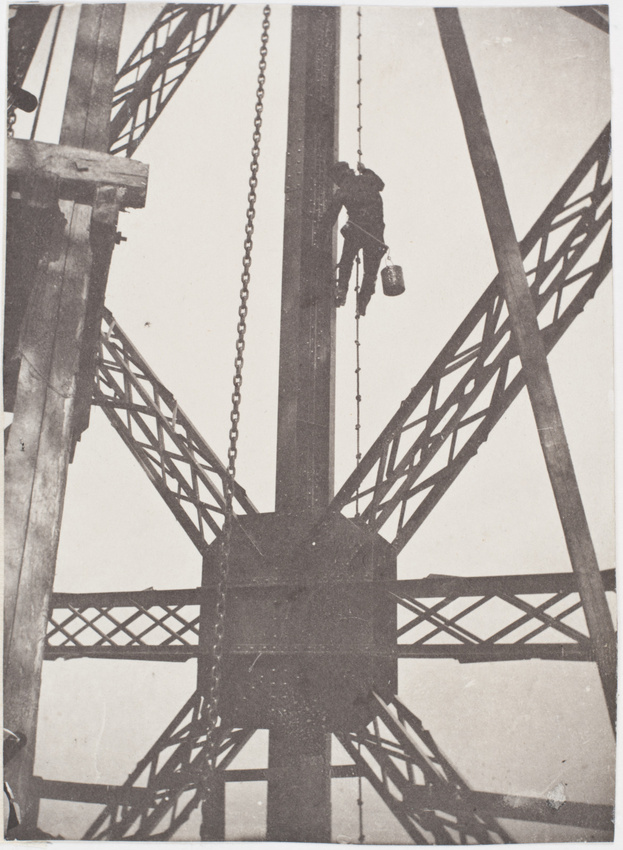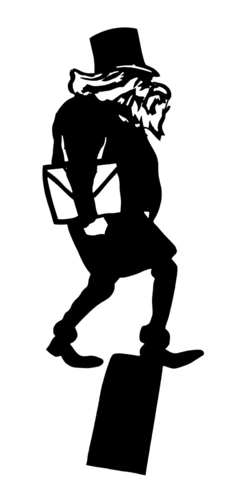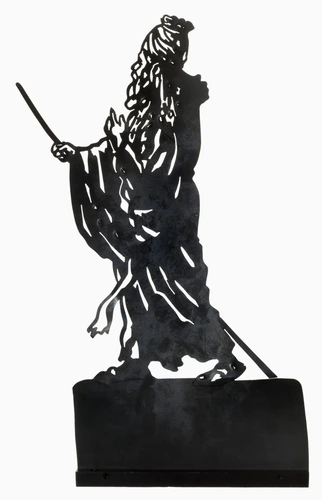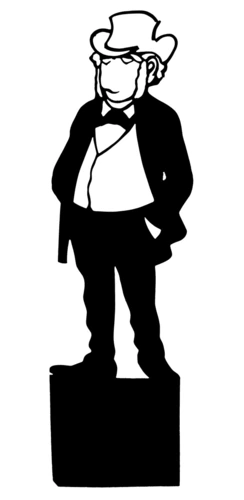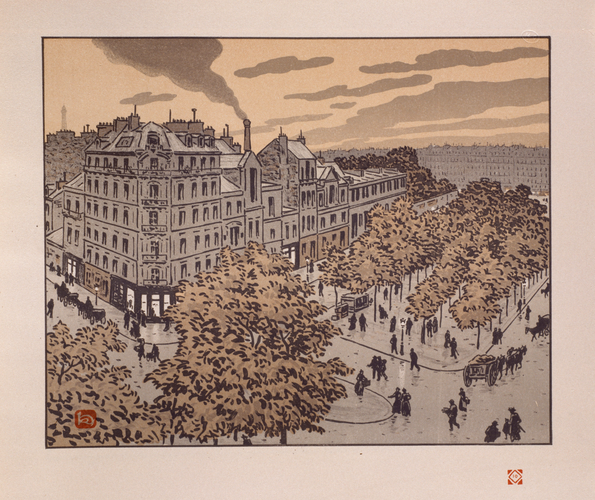La Tour Eiffel - Peintre sur une corde à noeuds le long d'une poutre verticale, au-dessus d'un assemblage de poutres
Mainly known for his drawings and printmaking work, Henri Rivière practised photography from the middle of the 1880s, probably up to the eve of the First World War.
Just before the Eiffel Tower was completed he produced a series of photographs, taken directly from the monument. His images are much smaller in size than those of Louis-Emile Durandelle, another photographer at the building site. Moreover, whereas few people figure in Durandelle's work, Rivière likes to use high and low-angle shots to portray the workers moving among the metal structures.
Rivière worked with a snapshot camera, not the one Kodak brought out in 1888 using rolled photographic film, but a model with wooden bellows, film holder and plates which was nonetheless light and easy to transport. This equipment enabled him to create daring compositions. Through his lens the workers become acrobats, agile climbers, turning to pose for the camera. But as much as the men on it, it is the beauty of the monument, its architecture with its spatial and visual surprises that inspired the photographer.
